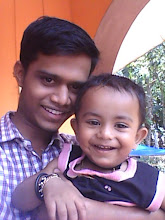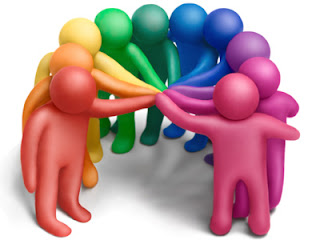FORMAL AND INFORMAL ORGANISATION
Top
executive of a concern
consider organisation as the
process of bringing together physical, financial and
humen resource in the best possible manner so as to achieve the goals.
FORMAL
ORGANISATION
It
refers to the structure of relationships
deliberately designed by the top management.
It is officially set to realize the objective.In this structure,
responsibility, auhority,accountability, lines of commands, clear definition of
jobs etc. will be specified. Every
subordinated is expected to
obey his superior in the formal chain
of command
“An
organization is formal when the activities of two or more persons are
consciously coordinated towards a common
objective ”
FEATURES
OF FORMAL ORGANISATION
v Deliberately planned and created
by the top management to achieve common goals.
v Based on division of labour and
specialisation.
v Emphasises jobs or position and
not individual.
v Founded on ideal relationship
i.e the authority,responsibilty and
accountability of each level are clearly defined.
v Supported by organisational
charts.
v It is impersonal
v It is based of principles of
organisation
Informal
organization
Within
the formal organisation,individuals carry out the assigned task in co-operation
with each other. They interact or
communicate on personal whims,likes, dislikes, prejudices
etc.among themselves in the course of
their work. This gradually develops into friendly relations and forms small
social groups. The network of personal and
social relationship on the basis of friendship and common interest is called informal
organisation.
Features
of informal organization
v Arises spontaneously and not
preplanned.
v It is a natural process.
v Based on common taste,
whims,likes,prejudices,etc.
v It reflects human relationships.
v Its relationship is based on
social, emotional and psychological
needs.
v It is based on personal
preferences and understanding.
v It is indefinite and has no
structure .
It
will not appear in the formal organisation charts
difference
between formal and informal organization
Formal
organisation
- Deliberately planned and
created by top management
- To achieve predetermined
goals of the organisaion
3.Has a well defined structure of jobs
and relationship
4 .Highly rigid
Informal
organisation
- Arises spontaneously as a
result of social interaction amoung the employees
- To satisfy social and
cultural needs and fulfil common interests
- Does not have a clear cut
structure rather forms a complex net work of relations
- More flexible






informative post! I really like and appreciate your work, thank you for sharing such a useful facts and information about informal employee relations process, keep updating the blog, hear i prefer some more information about jobs for your career hr jobs in hyderabad .
ReplyDelete